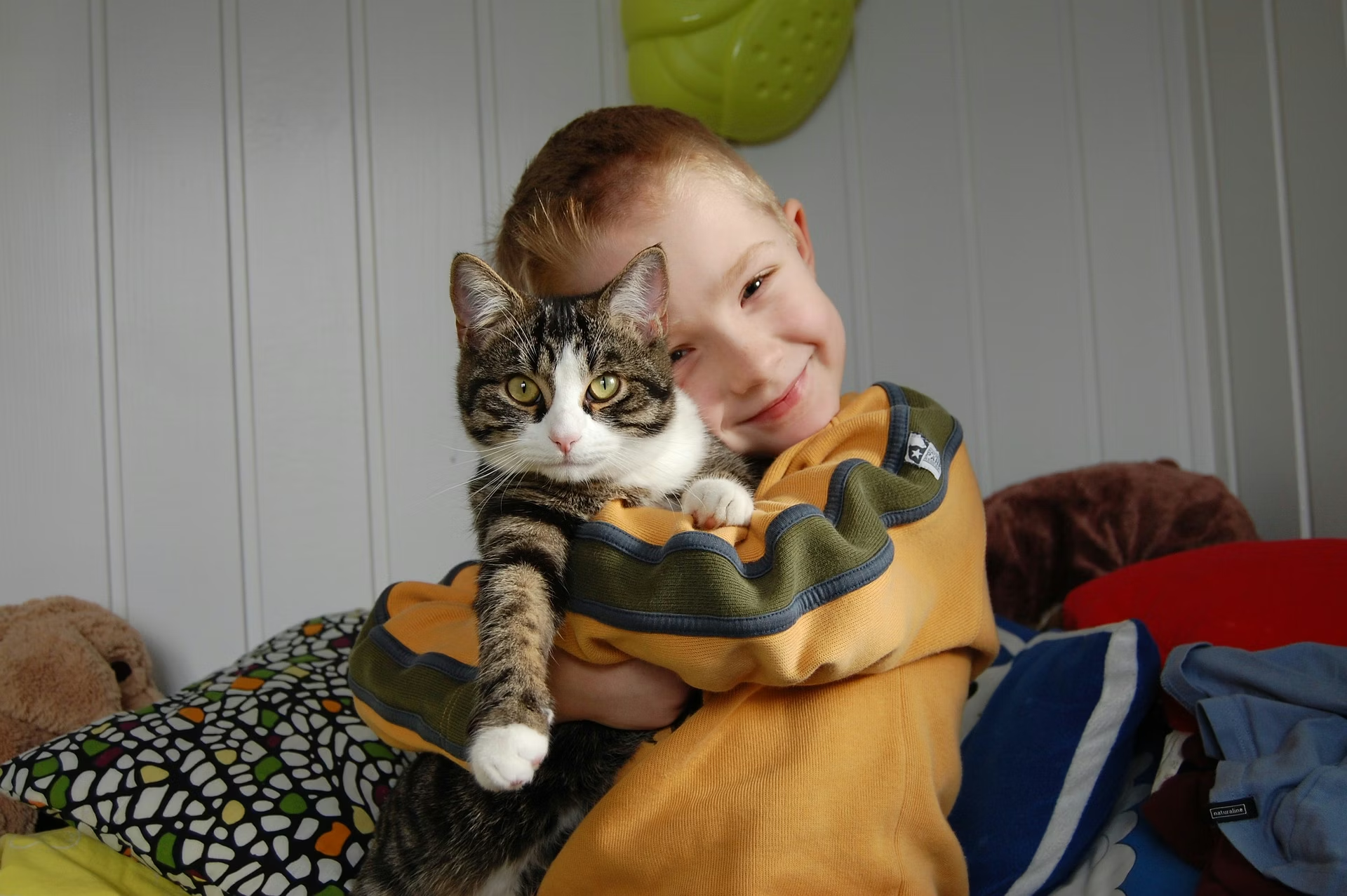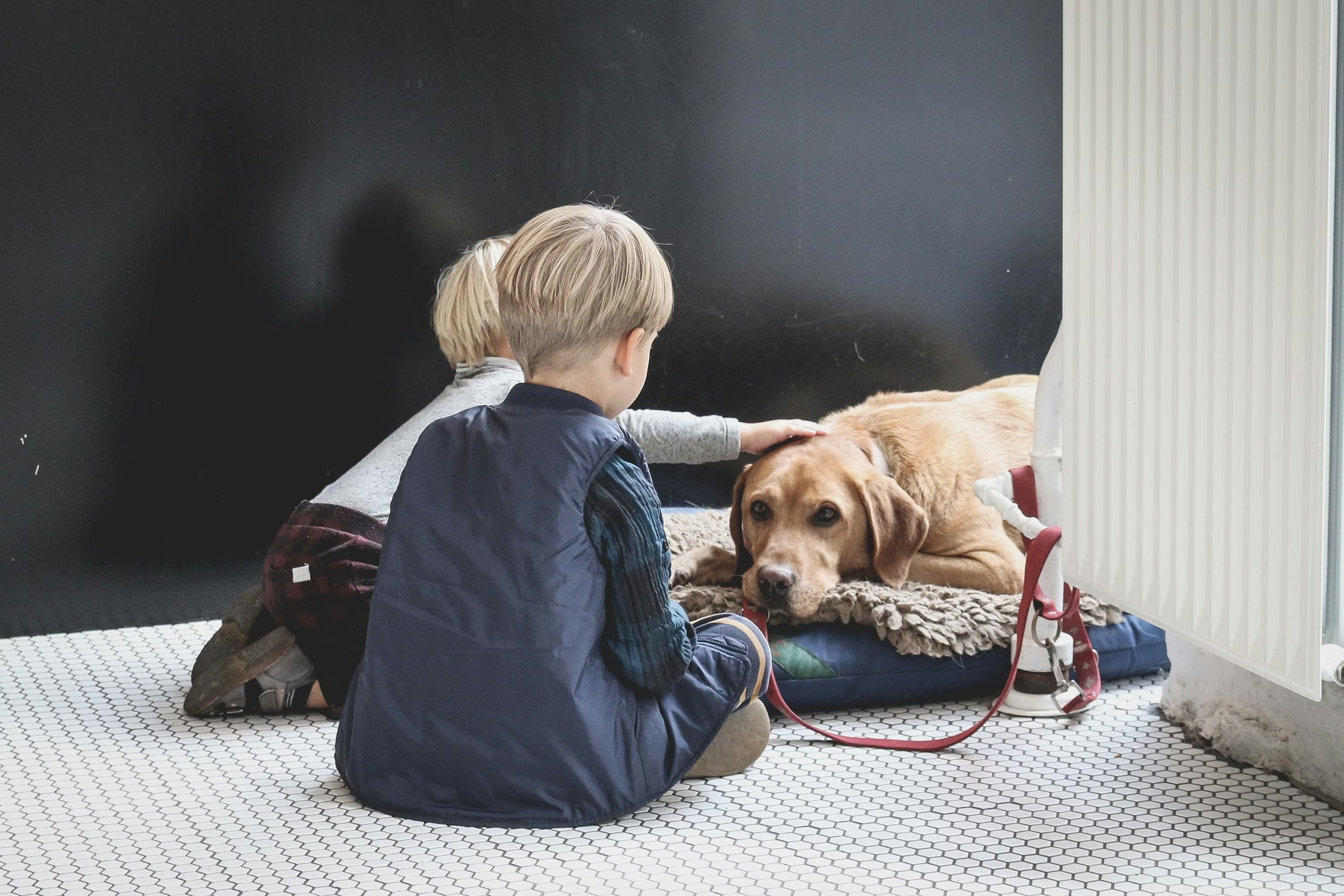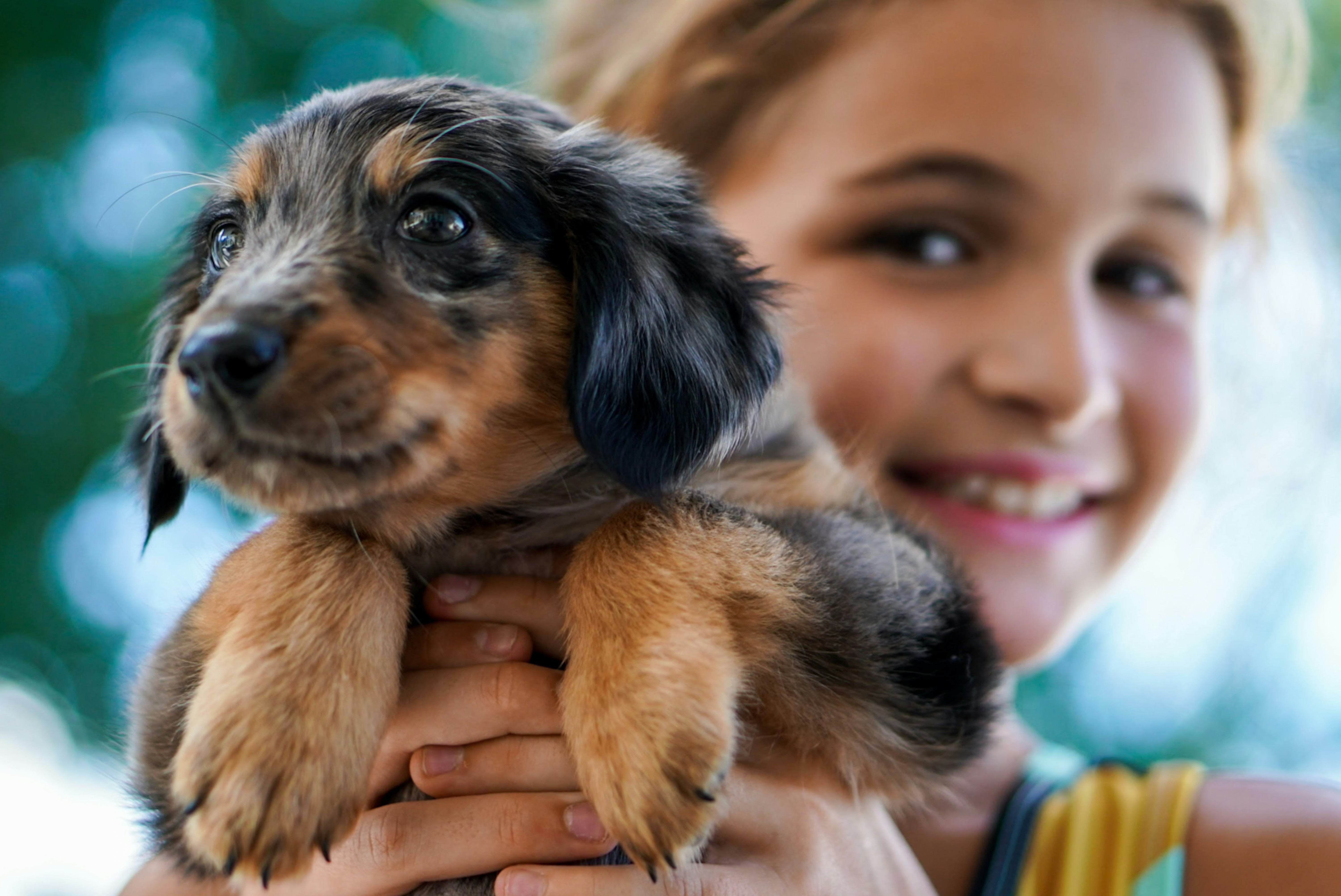Kids and pets. Pets and kids. Together they can create a lifetime of memories and an endless scroll of adorable photos and videos. But for them to become each other’s favorite playmates and best pals, they must have a respectful, trusting relationship. And we’re happy to report that there’s a lot you can do as a parent to lay the groundwork for a positive experience right from the start. Just follow these tips to set your kids and your fur-kids up for success from the beginning.
Do some pre-work
When it comes to kids and pets (or most things in life, really), preparing ahead of time is better than doing damage control after the fact. So before you get your heart set on a particular pet, do a little research to find one that’s most likely to be a good fit for your family. Think about your lifestyle and consider the characteristics of different dog or cat breeds. If you have an active, busy household, look for breeds that like to play and be part of daily activities. Also, take into account how much a particular breed enjoys being handled. For example, Ragdoll cats and Golden Retriever dogs are typically friendly, gentle pets that like spending time with kids. Savannah cats and very small dogs like Chihuahuas, on the other hand, may have less tolerance for rambunctious little ones.
If you’re planning to get your dog or cat from a breeder, try to find one that has kids in the household. This way, your new puppy or kitten will have already had some socialization around kids. Or if you’re adopting from a shelter, ask the staff if the pet has a history of living with kids.

Set the ground rules
The most important rule, and the one that sets the tone for the relationship between your pet and your kids, is: while pets make excellent playmates, they themselves are not a toy. That means that both the pet and the kids need to be willing participants in games.
Your new pet should have a place in the house, whether it’s a crate for a dog or a perch for a cat, that is their own. Your pet should know that it’s a safe place to retreat whenever they need a break, and your kids should know they are not allowed into that space. Pets should also be given space when eating, drinking, or going to the bathroom.
Before bringing your new pet home, spend a little time teaching your kids the best way to pet a dog or a cat. For cats, this means petting the cheeks, chin, and between the ears while avoiding the tail and tummy. Dogs typically prefer pets under the chin or on their sides over direct pets to the top of their heads. And for both, it’s recommended to let the pet come to the child versus the other way around. If your pet walks away after a few moments, let them go and wait for the next opportunity to interact.
Manage introductions closely
New Pet Day is bound to be exciting for your kids. But for your new dog or cat, it could be a little scary. So while your kids may want to run up to their new family member and snuggle immediately, it’s best to take things much slower.
When introducing kids to a new dog, it’s helpful to have two adults present: one to manage the dog and one to manage the children. Keep the dog on a leash and let them get used to being around your kids while out of arm’s reach. As you bring your kids closer and they start to interact, watch your dog’s body language to see how they’re responding. And if either your kids or your dog get too excited, it’s best to take a break and relax.
For cats, it’s a good idea to close them in a quiet room and let them get used to it before introducing kids. Then, start by having short sessions together and build up to longer periods as your cat gets used to their new home and family. And as with dogs, keep an eye on your cat’s body language to gauge how they’re feeling about the experience.

Supervise interactions
Even after initial introductions, continued supervision is needed. If your kids are older, once you’re confident in your pet’s personality and your child has proven their ability to follow the ground rules, you can start leaving them unattended. However, babies and very young children should always have an adult around when pets are in the room.
As with the introductory period, keep an eye on your pet’s body language and pick up on any cues they’re giving. For example, a happy, relaxed dog might have their tail down and their mouth slightly opened, while a fearful or aggressive dog might have their ears back and their hackles raised. A relaxed cat might have an upright tail or roll onto their back. A stressed cat might hold their ears flat against their head and crouch low to the ground. By keeping a close eye on kids and pets as they play, you’ll be able to detect any changes in body language and intervene if your pet (or your kid) needs a break.
Get help from the pros if you need it
If your new pet is struggling to adapt to your home and living with children, a professional trainer can help. Fear, anxiety, or aggression are best dealt with sooner rather than later. If you see any signs of these in your pet, reach out to a board-certified veterinary behaviorist, certified pet trainer, or your regular veterinarian for advice.
Ready to learn more about your pet?
Over 3 million pet parents have trusted Wisdom Panel™ insights to help them make decisions about the health and wellness of their four-legged family members.
Shop DNA kitsDon’t miss great content like this.
Join our newsletter pack and get more tips that help you pet parent like a pro.
We’d love to send you emails about new product updates, special offers, and news from us, and other Mars Petcare brands. If you are over 16 years old please sign up.
We understand you may want to change your preference, you can do this by clicking unsubscribe on any of our communications. We may use your data for research to enhance our products and services. See our privacy statement to find out how we collect and use your data, to contact us with privacy questions or to exercise your personal data rights.














